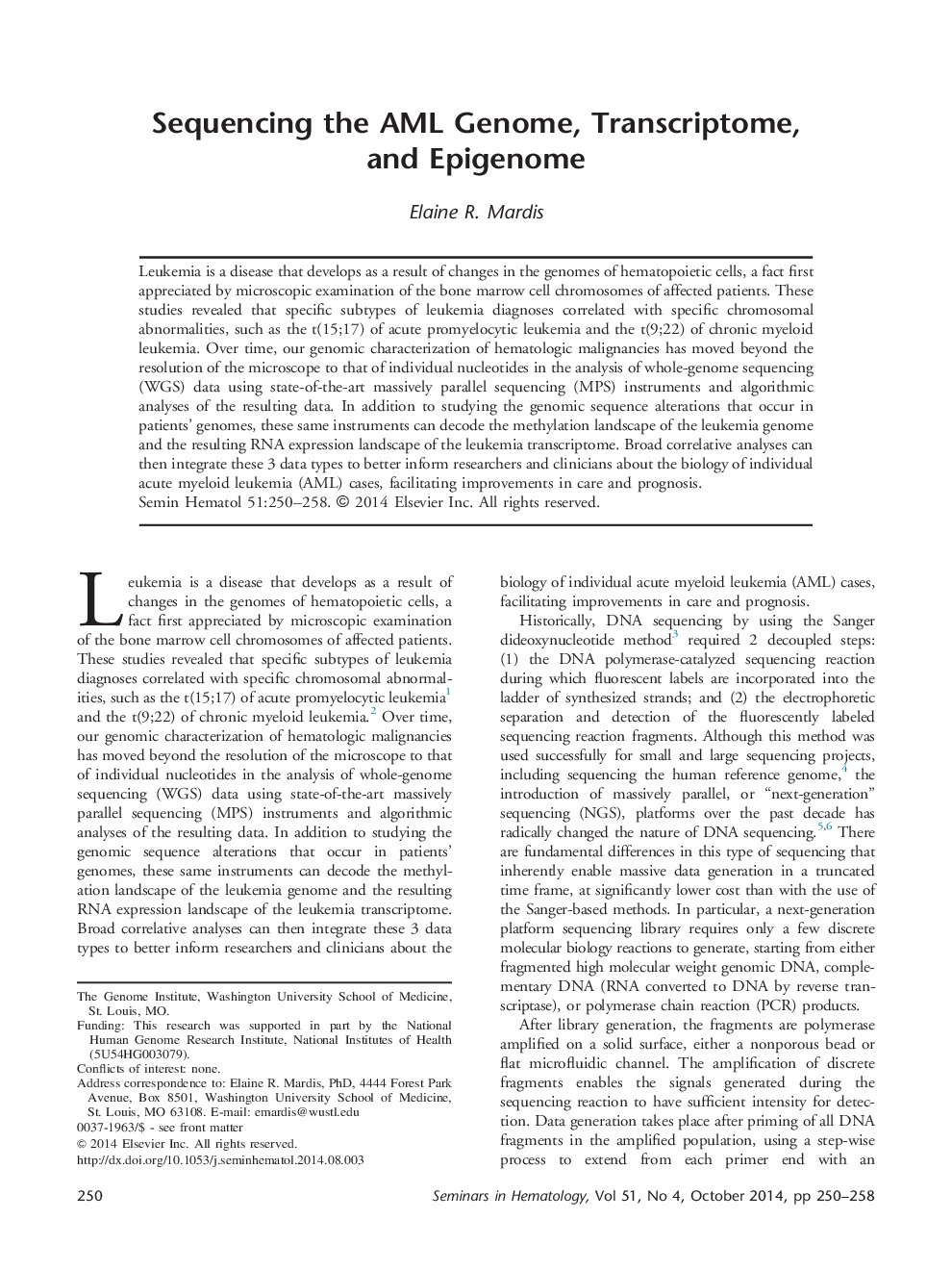| Article ID | Journal | Published Year | Pages | File Type |
|---|---|---|---|---|
| 3333539 | Seminars in Hematology | 2014 | 9 Pages |
Abstract
Leukemia is a disease that develops as a result of changes in the genomes of hematopoietic cells, a fact first appreciated by microscopic examination of the bone marrow cell chromosomes of affected patients. These studies revealed that specific subtypes of leukemia diagnoses correlated with specific chromosomal abnormalities, such as the t(15;17) of acute promyelocytic leukemia and the t(9;22) of chronic myeloid leukemia. Over time, our genomic characterization of hematologic malignancies has moved beyond the resolution of the microscope to that of individual nucleotides in the analysis of whole-genome sequencing (WGS) data using state-of-the-art massively parallel sequencing (MPS) instruments and algorithmic analyses of the resulting data. In addition to studying the genomic sequence alterations that occur in patients' genomes, these same instruments can decode the methylation landscape of the leukemia genome and the resulting RNA expression landscape of the leukemia transcriptome. Broad correlative analyses can then integrate these 3 data types to better inform researchers and clinicians about the biology of individual acute myeloid leukemia (AML) cases, facilitating improvements in care and prognosis.
Related Topics
Health Sciences
Medicine and Dentistry
Hematology
Authors
Elaine R. Mardis,
